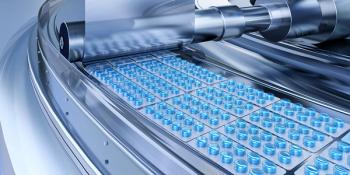
Equipment and Processing Report
- Equipment and Processing Report-06-20-2012
- Volume 0
- Issue 0
Finding Value in Single-use Systems
Time- and cost-savings benefits help drive increased use of single-use, disposable systems in biopharmaceutical manufacturing.
Single-use systems offer clear benefits to biopharmaceutical manufacturing that include increased flexibility, reduced contamination, and time and cost savings. “A few years back, the value of single-use versus reusable was far from clear to end-users, but, in almost every case, those days are behind us now. A wealth of cost comparison data published by end-users, vendors, and industry organizations have demonstrated that, in the vast majority of situations, the single-use approach is more cost-effective,” says Richard Bhella, product manager at ATMI LifeSciences.
Cost analysis software programs can be useful in quantifying cost savings for particular applications and specific process conditions. Case studies using a cost-analysis program (BioSolve, Biopharm Services) found significant cost savings, particularly in reduced water use (1, 2). The Parenteral Drug Association will be publishing a technical report this fall that gives a primer on the economic factors of implementing single-use systems.
Single-use systems have been finding commercial use in new capacity, new applications, or developmental–scale applications. In green-field sites, where the facility is being built from the ground up without the burden of previous process equipment decisions, the value of single-use-lower capital investment, faster startup and greater process flexibility-is clear, says Bhella. It is more difficult, however, to justify replacing existing commercial stainless-steel capacity.
Applications where single-use is seen as taking hold include routine mixing, such as buffer and media preparation, and liquid and powder storage/handling. “In these applications, the time saved simply from not having to clean the stainless-steel mixers is a huge throughput multiplier,” notes Bhella. Bioreactor applications have been slower to grow, probably due to excess capacity with existing equipment. One emerging single-use bioreactor segment is cell therapy, in which single-use technology makes manufacturing small batches of personalized medicines feasible, says Bhella.
Hybrid systems that combine multi-use, stainless-steel product-contact sections with disposable product-contact sections are often used. Hybrid systems reduce capital investment and move costs from fixed, up-front costs to activity-based costs (i.e., consumables) that are spent at the time of manufacture, notes Andrew Sinclair, president of BioPharm Services, in an analysis of hybrid systems in a monoclonal antibody manufacturing case (3).
In
Pharmaceutical Technology's
annual reader survey of biopharmaceutical manufacturers, 66% of respondents in both 2011 and 2012 reported that they use hybrid systems (4).Use of completely disposable systems is slowly rising however, with 12% of respondents in 2012 compared to 8% in 2011 saying that they used all-disposable systems.
References
- A. Sinclair and M. Monge, BioPharm Intl., 34 (12), 22–27 (2010).
- E. Ayturk, presentation at Interphex (New York City, 2012).
- A. Sinclair and M. Monge, BioProcess International, 9 (9), 12–17 (2011).
- A. Ritter, “Bioprocessing & Sterile Mfg.” supplement to Pharm. Technol.36 (5), s6–s10 (2012).
To read the recent blog, “
Articles in this issue
over 13 years ago
Working with Tubing for Peristaltic Pumpsover 13 years ago
A Practical Guide to Pan Coating and Scale-UpNewsletter
Get the essential updates shaping the future of pharma manufacturing and compliance—subscribe today to Pharmaceutical Technology and never miss a breakthrough.





